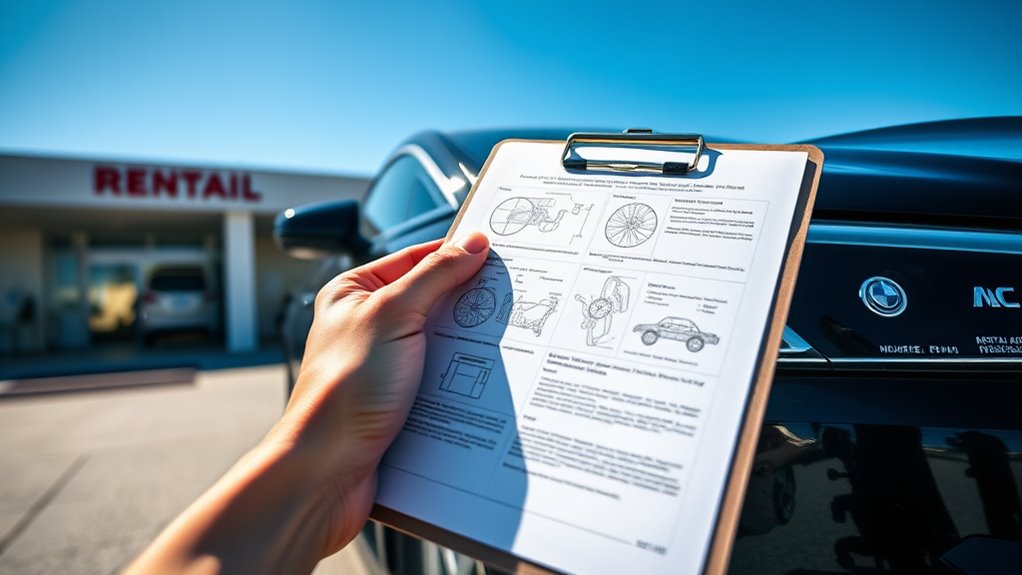You might not realize that certain exclusions in commercial use insurance can greatly affect your coverage. For instance, intentional acts and pollution liabilities often leave businesses vulnerable. Understanding these exclusions is essential for protecting your assets and mitigating risks. As you navigate the complexities of commercial insurance, it's crucial to know which areas may require additional coverage. Let's explore the top five exclusions that could impact your business operations.
Key Takeaways
- Pollution exclusions limit coverage for losses tied to pollutants, making it essential for businesses in high-risk industries to seek additional insurance.
- Intentional acts typically lead to coverage denial unless they result in unintended consequences, which may be covered under general liability policies.
- Unauthorized use of company vehicles for personal reasons can void insurance coverage, emphasizing the need for strict adherence to usage guidelines.
- Contractual liability exclusions prevent coverage for voluntarily assumed liabilities in indemnification agreements, requiring careful policy review to manage risks.
- High-risk industries may face coverage limitations due to prior claims history or location-based risks, necessitating specialized underwriting for adequate protection.
Intentional Acts and Criminal Activities

While you may assume that intentional acts are entirely excluded from commercial insurance coverage, the reality is more nuanced. Intentional acts can indeed be covered if they lead to unexpected outcomes. If you didn't expect harm or damage from your actions, your general liability policy might provide coverage. Furthermore, if you acted with the specific intent to cause harm, insurers typically deny coverage. Additionally, intentional acts can lead to unintended injuries that are still covered under certain circumstances. Understanding non-owner car insurance is also crucial for businesses that may need to utilize vehicles not owned by them. Criminal activities like fraud complicate matters; standard policies usually exclude losses from employee fraud unless you have specific fidelity coverage. Misunderstandings about these exclusions can result in disputes. Understanding the distinction between intentional acts and their outcomes is essential for safeguarding your business against unforeseen liabilities.
Unauthorized Use of Vehicles
Unauthorized use of company vehicles can lead to significant gaps in insurance coverage, especially if employees don't adhere to established policies.
Commercial auto insurance typically specifies that vehicles are meant for business-related activities only. If employees transport non-employees or personal belongings in a commercial vehicle, they risk voiding coverage.
Vehicles covered under commercial auto insurance are strictly for business use; personal use can void coverage.
Moreover, using company vehicles for non-business purposes without permission classifies as unauthorized use, which can result in claim denial.
It's vital for you and your employees to understand that personal use is generally excluded from commercial policies.
To avoid potential issues, make certain everyone follows company guidelines regarding vehicle use. Doing so protects your business from unexpected liabilities and maintains the integrity of your insurance coverage.
Pollution and Environmental Damage
Pollution and environmental damage present considerable challenges for businesses, particularly when it comes to insurance coverage.
Pollution exclusions in commercial general liability (CGL) policies limit or exclude coverage for losses tied to pollutants, including chemicals and bacteria. These exclusions can considerably diminish your financial protection against cleanup costs and legal liabilities.
In industries like dry cleaning, printing, and manufacturing, the risks are pronounced due to the nature of operations. Legal interpretations of pollution exclusions vary, leaving you vulnerable if a claim arises.
While some policies include hostile fire exceptions, many do not. To mitigate these risks, consider separate pollution liability insurance or endorsements that modify exclusions.
Understanding your coverage is essential to protect your business from potential environmental exposures.
Contractual Liability Exclusions

Understanding the limitations of your commercial insurance policy is essential, especially when it comes to contractual liability exclusions. These exclusions prevent coverage for liabilities you've voluntarily assumed through contracts beyond what the law requires.
Commonly found in general liability policies, they help manage risk and prevent abuse by limiting coverage to legally implied liabilities. For instance, hold harmless or indemnification agreements typically trigger these exclusions.
Commonly included in general liability policies, these exclusions limit coverage to only legally implied liabilities, particularly triggered by hold harmless agreements.
However, certain "insured contracts" may be exempted, providing coverage when liabilities arise from legitimate business operations.
It's vital to review your policy carefully, as various endorsements and interpretations could affect your coverage scope and risk management strategies, ensuring you're protected against unexpected liabilities.
Coverage Limitations for High-Risk Industries
Maneuvering the complexities of coverage limitations in high-risk industries is essential for businesses seeking adequate insurance protection.
Common exclusions often stem from location-based risks, like natural disasters, or a history of prior claims that can limit your coverage options. Specific activities, such as handling hazardous materials, frequently face exclusion from standard policies, while non-compliant buildings may also be denied coverage.
Additionally, insurers impose policy caps and higher premiums due to the increased likelihood of claims. You may need specialized underwriting to navigate these restrictions, and implementing additional safety measures might be necessary.
Understanding these limitations guarantees you secure the best possible coverage tailored to your unique risks and operational needs.
Conclusion
In traversing the landscape of commercial use insurance, it's essential to recognize the pitfalls lurking in exclusions. Like shadows at dusk, intentional acts, unauthorized vehicle use, and pollution liabilities can silently threaten your coverage. Contractual liabilities and limitations for high-risk industries further complicate the picture. By understanding these exclusions, you're not just protecting your business; you're fortifying it against unforeseen storms. Seek additional policies to shore up your defenses, ensuring your enterprise remains resilient in turbulent times.






